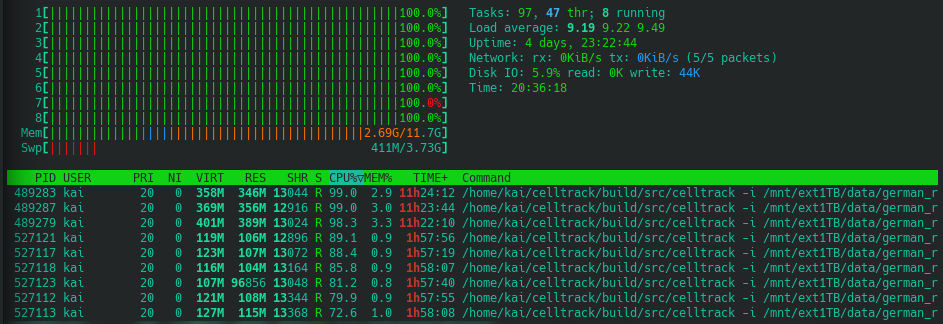I’m happy to announce that we just published another article about the response of small-scale convective precipitation extremes to a warming atmosphere in JAMES.
Abstract
There is increasing evidence that local rainfall extremes can increase with warming at a higher rate than expected from the Clausius-Clapeyron (CC) relation. The exact mechanisms behind this super-CC scaling phenomenon are still unsolved. Recent studies highlight invigorated local dynamics as a contributor to enhanced precipitation rates with warming. Here, cold pools play an important role in the process of organization and deepening of convective clouds. Another known effect of cold pools is the amplification of low-level moisture variability. Yet, how these processes respond to climatic warming and how they relate to enhanced precipitation rates remains largely unanswered. Unlike other studies which use rather simple approaches mimicking climate change, we present a much more comprehensive set of experiments using a high-resolution large eddy simulation (LES) model. We use an idealized but realistically forced case setup, representative for conditions with extreme summer precipitation in midlatitudes. Based on that, we examine how a warmer atmosphere under the assumption of constant and varying relative humidity, lapse rate changes and enhanced large-scale dynamics influence precipitation rates, cold pool dynamics, and the low-level moisture field. Warmer conditions generally lead to larger and more intense events, accompanied by enhanced cold pool dynamics and a concurring moisture accumulation in confined regions. The latter are known as preferred locations for new convective events. Our results show that cold pool dynamics play an increasingly important role in shaping the response of local precipitation extremes to global warming, providing a potential mechanism for super-CC behavior as subject for future research.
Lochbihler, K., Lenderink, G., & Siebesma, A. P. (2021). Cold pool dynamics shape the response of extreme rainfall events to climate change. Journal of Advances in Modeling Earth Systems, 13. https://doi.org/10.1029/2020MS002306


